Question
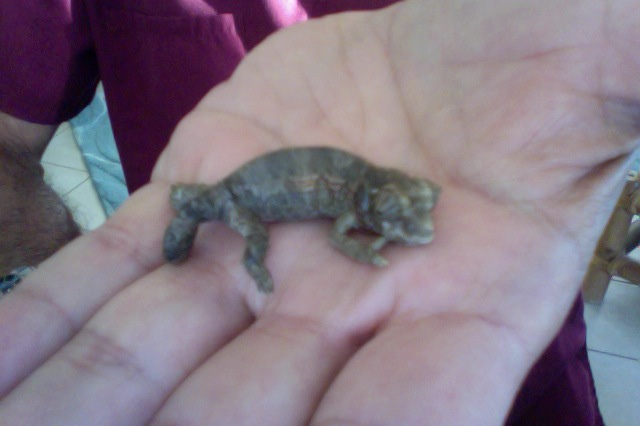 baby jackson chameleon
baby jackson chameleon 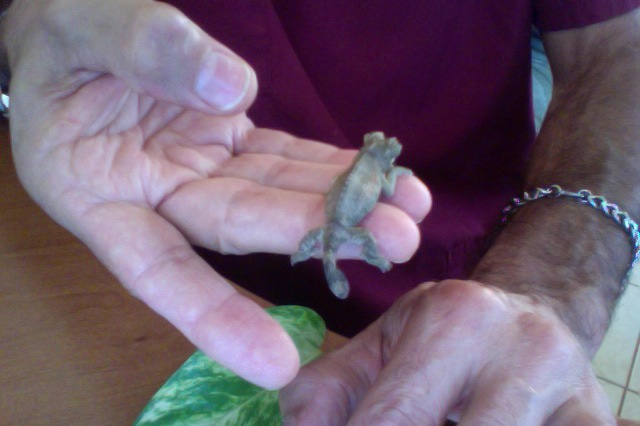 baby jackson chameleon
baby jackson chameleon
Aloha, I have (10 quantity) 1 month old Jackson Chameleons born in my Kihei, Maui residence.
One specimen has lost control of its hind legs and is lethargic. When his hind legs are touched It will open its mouth turn and hiss.
I first noticed his problem last night when he must have fallen off a branch 6 inches from the feeding container stocked with 14 day old crickets.
I keep the Chameleons in a small ZooMed ReptiBreeze 16X16X20 black screen cage.
Live ti plants reach to top of cage
and Epipremnum selections (pothos) vines strung from several Koa tree branches placed horizontally 3 inches from top of cage
Started feeding them pinhead crickets from birth.
have now shifted diet to 14 day old crickets.
feed crickets gut loading dry food and use Gut Load Cricket Drink w/Calcium - Zilla
Wake up at 7:00am fed them for 4 hours take them outside for remainder of day.
outside they are misted for 3 minutes per hour automatically in about 75% shade on north facing direction.
At sunset I bring them in and they sleep inside.
The temperatures inside daytime 75 degree F nighttime 65-70 degree F
temperature outside with misting daytime average 70-80 F
Lighting indoors include two sources placed on top of cage with 60 W reveal lightbulb 2850.000 K and
Tensor Light Bulb. Compact Fluorescent Twin Tube, 13 Watt, PL Twin Tube Bulb, 6400K
I have isolated the injured ? diseased? specimen keeping an eye on it its resting on a pothos leaf, on plate with good ventilation, 70 degree F indoors 75% shade indirect sunlight.
I might have physically injured the specimens rear legs accidentally moving it not sure?
Any ideas how to treat this individual? photo included
AnswerHi Paul,
Thank you for the detailed husbandry description and the photos. That saves me a lot of guesswork.
I think the short fall would have been an unlikely cause. One of their defense strategies is to simply drop from a branch if a predator approaches.
Your care sounds quite good. I'm not familiar with the UVB output of the bulbs you listed but the amount of time that you have them outside should easily satisfy those requirements. As you obviously know, Jackson's are montane dwellers in their native countries and require lower temps and more shade and humidity then many other species.
There is one diet suggestion that I would strongly urge you to make and that is to start using a powdered calcium supplement on their crickets. The plain calcium (without vitamin D3) should be sufficient with the natural sunlight exposure you are providing.
In order to be absorbed affectively calcium should be present in a 2 to 1 ratio over phosphorous in the diet. Crickets are naturally high in phosphorous, due to the composition of their exoskeleton, and low in calcium.
There have been studies done to compare the effectiveness of gutloading versus dusting to reverse this poor calcium to phosphorous ratio. They concluded that gut-loading alone (even with high calcium food) cannot reverse the ratio and bring it into the required 2 to 1 (Ca:Ph) range.
He may just be the first to show symptoms if this is in fact a calcium deficiency problem and you should be able to prevent problems with the others through an easy change.
You were speculating as to whether you may have injured him inadvertently. I can see how that might happen if you had tried to remove him from a branch before he had fully released his grip.
In either case, young, growing chams can be quite resiliant. With some accommodation from you that allows them to feed and drink they can often go on to recover from both skeletal and soft tissue injuries. He may not regain full, natural mobility but sufficient to live a long happy life in your care.
I took in a baby Veiled chameleon years ago that was horribly deformed from calcium deficiency. All four limbs were so soft they were shaped like "C's" rather then "L's". He could barely move let alone climb. With hand assisted feeding and proper diet he recovered enough not only to climb but to eventually breed with one of my females!
Good luck with your little guy.



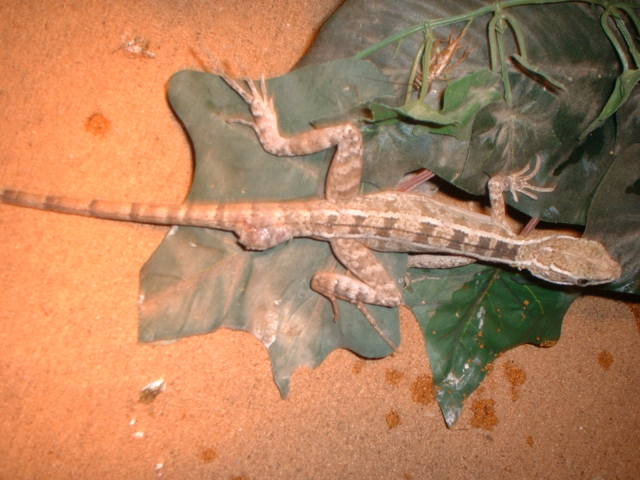 Bump on basalisk tial
Question
lizard
There is a bump or abscess on the tail
Bump on basalisk tial
Question
lizard
There is a bump or abscess on the tail
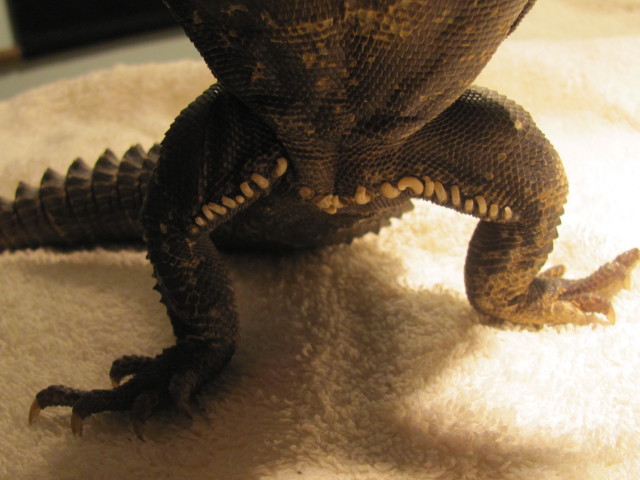 Uro parasite??? Please help
Questionloops
QUESTION: Hi Donna,
Ive had my u
Uro parasite??? Please help
Questionloops
QUESTION: Hi Donna,
Ive had my u
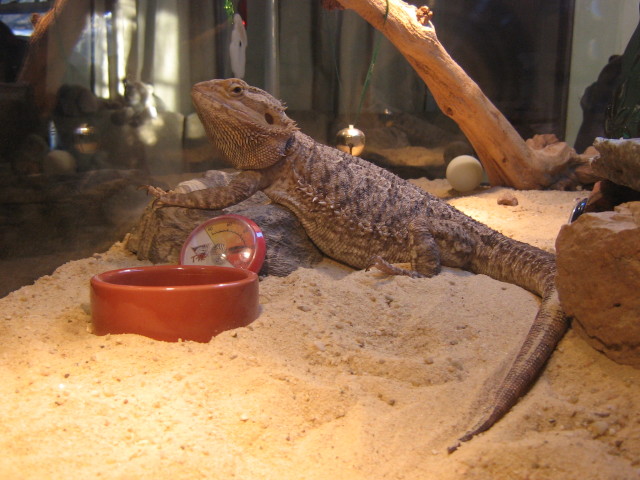 Beardie not eating.
QuestionQUESTION: I have a 5 yr. old bearded dragon tha
Beardie not eating.
QuestionQUESTION: I have a 5 yr. old bearded dragon tha
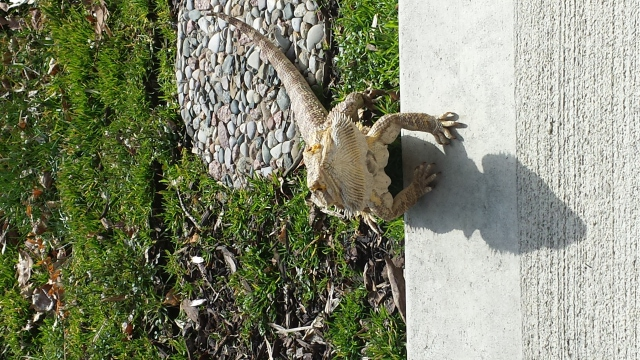 balance problem and severe flipping over problem
QuestionQUESTION: I have a 2yr old beardie named Turk.
balance problem and severe flipping over problem
QuestionQUESTION: I have a 2yr old beardie named Turk.
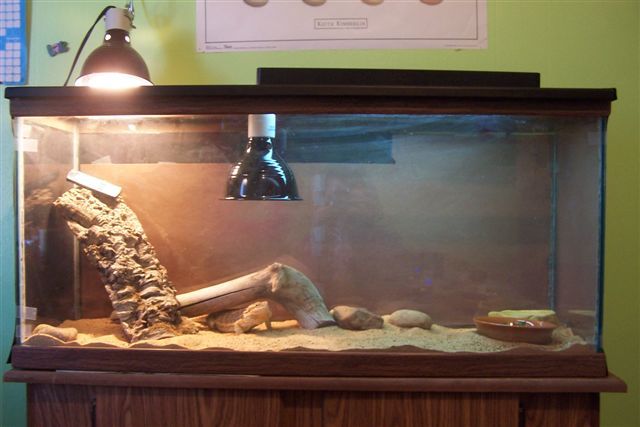 My BD wont eat at all.
QuestionQUESTION: I am desprate!! I purchase a 5-6 mont
My BD wont eat at all.
QuestionQUESTION: I am desprate!! I purchase a 5-6 mont